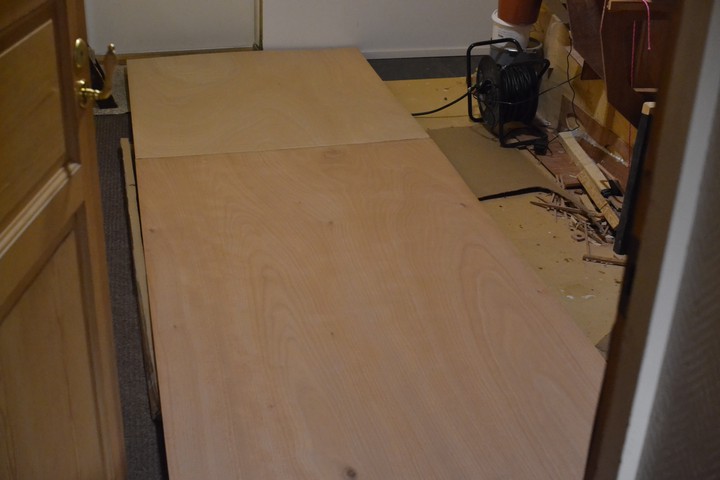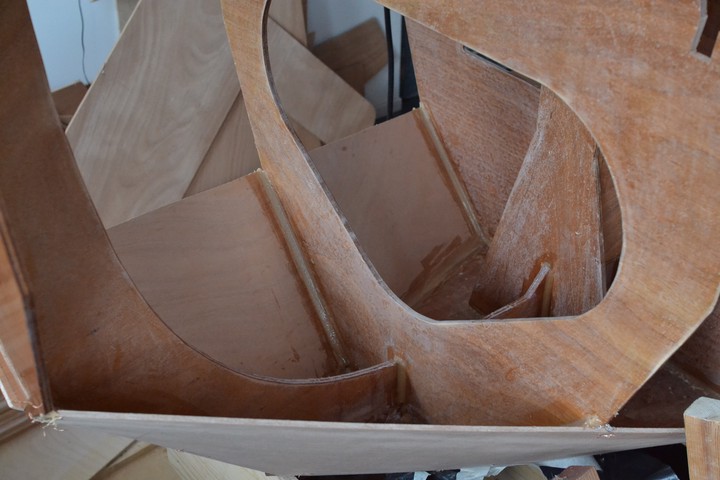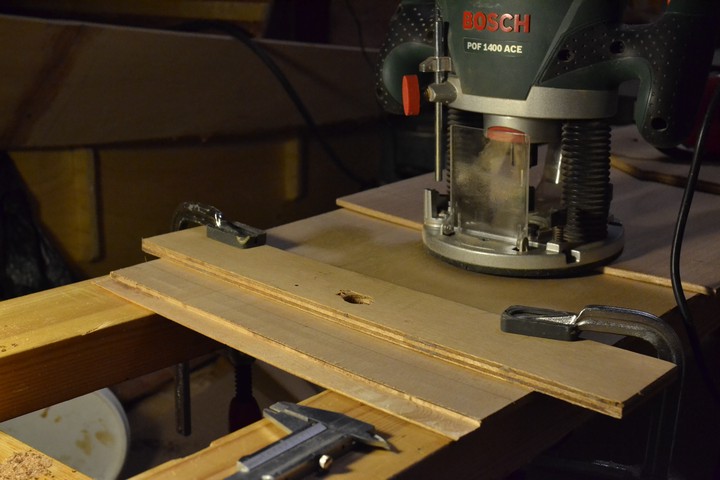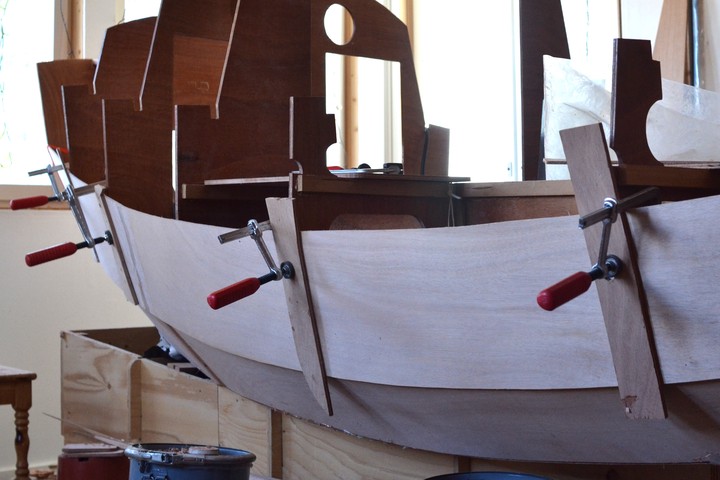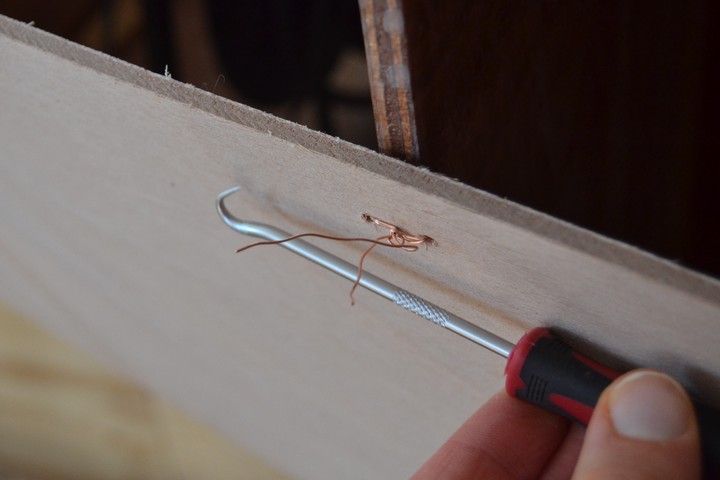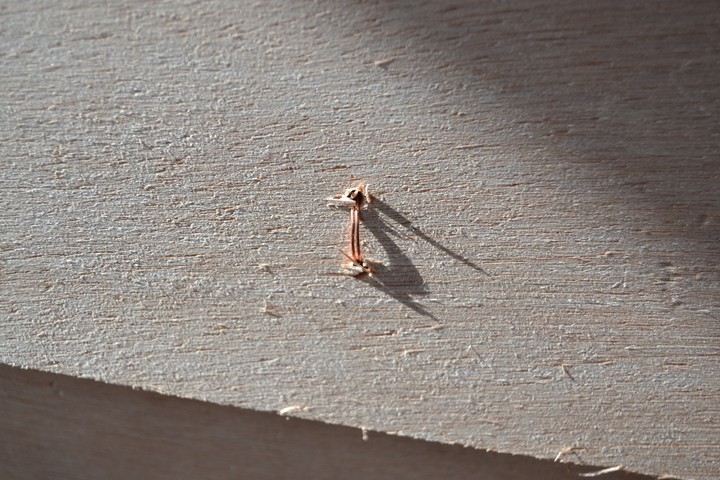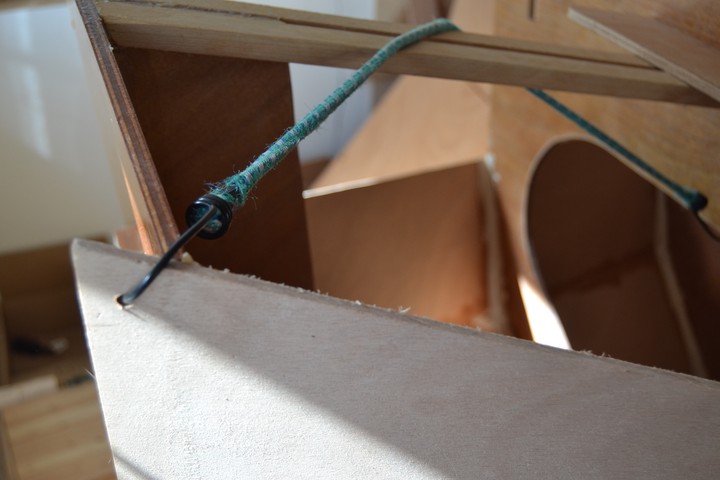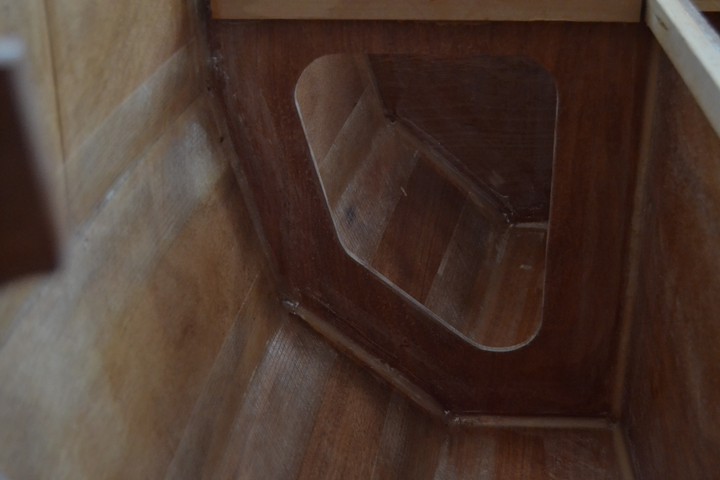Hull planking
Because length of the side planks is somewhere between 3700 and 3800 mm, you had to join one and half plywood sheets together. The method was familiar from extending the bottom sheet but at this time plywood was just 6 mm thick that made routing more bit difficult.
Fixing the hull planing was a whole new experience to me. Small slits were left here and there, and at couple of bulkheads the board went just slightly over the corner of the bulkhead. First I tried to fasten the board with the traditional Stitch and glue method (by drilling small holes of 1.5 mm for the copper wire of 0.7 mm). However, I didn’t manage to get the wire tight enough. So, I supported the board with the bellows and clamps. In case of the lowest starboard plank I didn’t use the wire at all.
Since I was running out of 6 mm plywood, I decided to make the second row of boards from a half of a scrap piece, which I sawed in half lengthwise. Then I routed a recess of about 3.5 mm on it. Plywood curling made the routing slightly challenging again. I made a bevel on the top edge of the bottom plank with a hand plane and party with a puukko knife.
Fixing plywood before gluing is a bit tricky. I have tried several methods listed below.
- stitch & glue method where you tie copper wire with a suitable hook
- with a clamp and pieces of plywood
- with a peg
- with a thick rubber cord
Out of those, a clamp and two pieces of plywood is my favourite, but if the clamp can’t be supported on one side, it’s better to use the stitch & glue method instead.
Fixing the upper hull planks was already routine, although the multistage nature of making them slowed down their completion. I tied them to the middle planks with copper wires and to the bulkheads with clamps. They planks were made a little too long, which made it easier to fix them in place. They are sawn to size with a Japanese saw at the end.
According to the instructions, the interior of the hull planks should be also glassed with fibreglass tape. I first coated the boards with one layer of epoxy, on top of which I epoxied the fibreglass tape. The operation itself was relatively straightforward, and was speeded up by applying the second epoxy coat a couple of hours after the first one, avoiding the tedious sanding.
| Next: | Electrics |
| See also: |
Bottom Building Merisirri |
